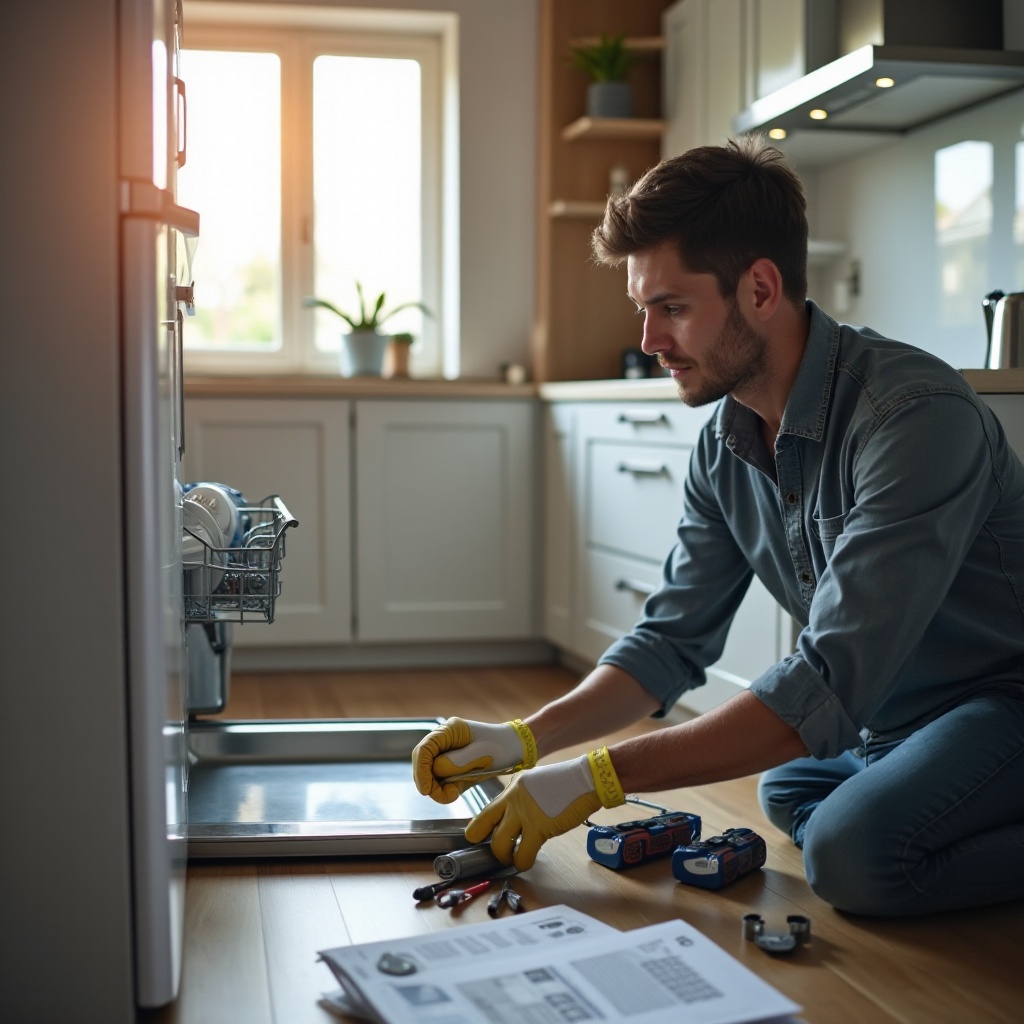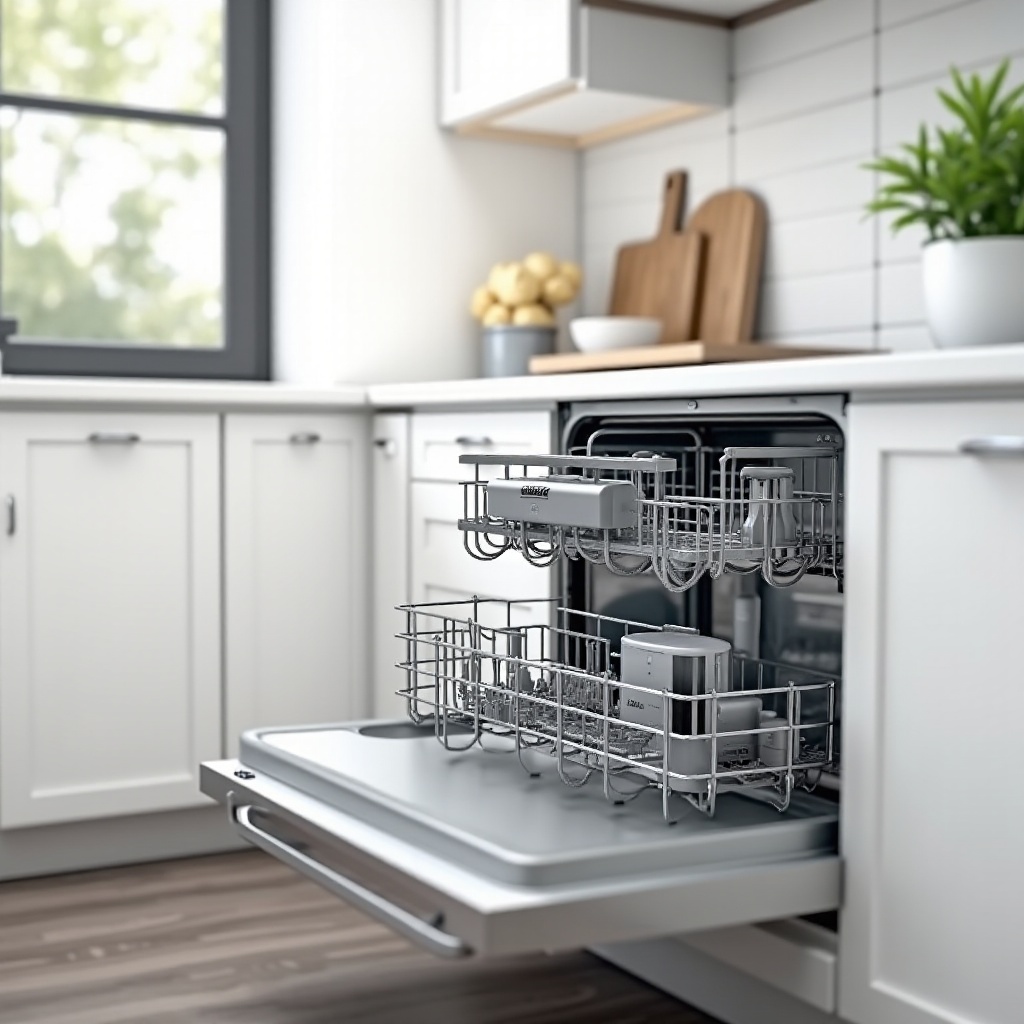Introduction
Connecting your dishwasher to electrical power yourself can save time and money. However, it requires careful attention and adherence to safety protocols to ensure both your safety and the efficient operation of your appliance. This guide provides step-by-step instructions to help you make a successful and secure electrical connection for your dishwasher.

Safety Precautions Before Starting
Before diving into the actual connection process, prioritizing safety is paramount. Taking appropriate precautions not only protects you but also ensures the longevity of your dishwasher.
Gathering Necessary Tools and Equipment
To start, you will need these tools and materials:- Screwdrivers (Phillips and flat-head)- Wire strippers- Electrical tape- Wire connectors- Voltage tester- Power drill- Safety gloves
Having everything prepared beforehand saves time and reduces interruptions once you begin the installation.
Turning Off the Main Power Supply
Safety is crucial, so ensure to disconnect the power supply at the circuit breaker before performing any electrical work. Verify that the power is off by using a voltage tester on the wires where the connection will be made. This step protects you from potential electric shocks during the installation.

Understanding Dishwasher Electrical Requirements
Knowing the electrical requirements of your dishwasher is essential to ensure a seamless and safe connection. This involves understanding voltage, amperage specifications, and circuit requirements.
Voltage and Amperage Specifications
Dishwashers typically run on a specific voltage and amperage. Most dishwashers require a 120-volt, 15- or 20-amp circuit to operate effectively. Check your dishwasher's manual for exact requirements.
Identifying Circuit and Outlet Requirements
Identify whether your electrical circuit and outlet meet the dishwasher's requirements. The outlet should be a dedicated circuit specific to the dishwasher to prevent overloads, which can cause electrical fires.

Step-by-Step Guide to Electrical Connection
With safety measures in place and a clear understanding of the electrical requirements, you can begin the connection process.
Connecting the Power Cord
- Locate the junction box on the dishwasher.
- Open the junction box cover with a screwdriver.
- Insert the power cord through the strain relief fitting on the junction box. Ensure the fitting is tight to prevent the cord from tugging.
- Strip the insulation from the end of each wire in the power cord using wire strippers, exposing about ½ inch of wire.
Wiring the Dishwasher to the Electrical Supply
- Match the wire colors: Connect the black wire from the power cord to the black wire on the dishwasher, the white wire to the white wire, and the green or bare wire to the green grounding screw.
- Secure the connections: Use wire connectors to secure the connections, twist them tightly, and wrap them with electrical tape for additional security.
- Close the junction box: Carefully place all wires inside the junction box and replace the cover, ensuring it is securely fastened.
Testing the Electrical Connection
After making all the necessary connections, it’s crucial to test them to guarantee everything is functioning correctly.
Ensuring the Power Supply is Properly Connected
Turn the circuit breaker back on to restore power. Use a voltage tester to check that electricity flows to the dishwasher. This initial test confirms that the power is adequately reaching your appliance.
Checking for Any Electrical Faults
Run a short cycle on the dishwasher and observe for any issues. Look out for signs of electrical faults such as tripping circuit breakers or the appliance not powering on. Immediate troubleshooting can prevent damage or hazards.
Common Mistakes to Avoid
Even with detailed instructions, mistakes can happen. Knowing common pitfalls can help prevent errors during installation.
Overlooking Grounding
Never overlook the grounding wire. Lack of grounding can result in electric shocks. Ensure that the ground wire is securely connected to the dishwasher’s frame and the grounding screw.
Incorrect Wire Connections
Ensure that each wire is connected to its corresponding color. Misaligned connections can cause malfunctions or even damage the appliance. Double-check all connections and secure them properly.
Conclusion
Successfully connecting your dishwasher to electrical power requires careful attention to detail and adherence to safety protocols. Following this guide will help you install and operate your dishwasher safely and efficiently. Remember, if you're uncertain at any step, consulting a professional is always the best option.
Frequently Asked Questions
What tools are necessary for connecting a dishwasher to electrical power?
You'll need screwdrivers, wire strippers, electrical tape, wire connectors, a voltage tester, a power drill, and safety gloves.
How can I test if my dishwasher electrical connection is safe?
Restore power at the circuit breaker and use a voltage tester to confirm electricity is reaching the dishwasher. Run a test cycle to check for any issues.
When should I call a professional for my dishwasher electrical connection?
If you're unsure about handling electrical work or encounter issues during the process, it's best to call a licensed electrician.
